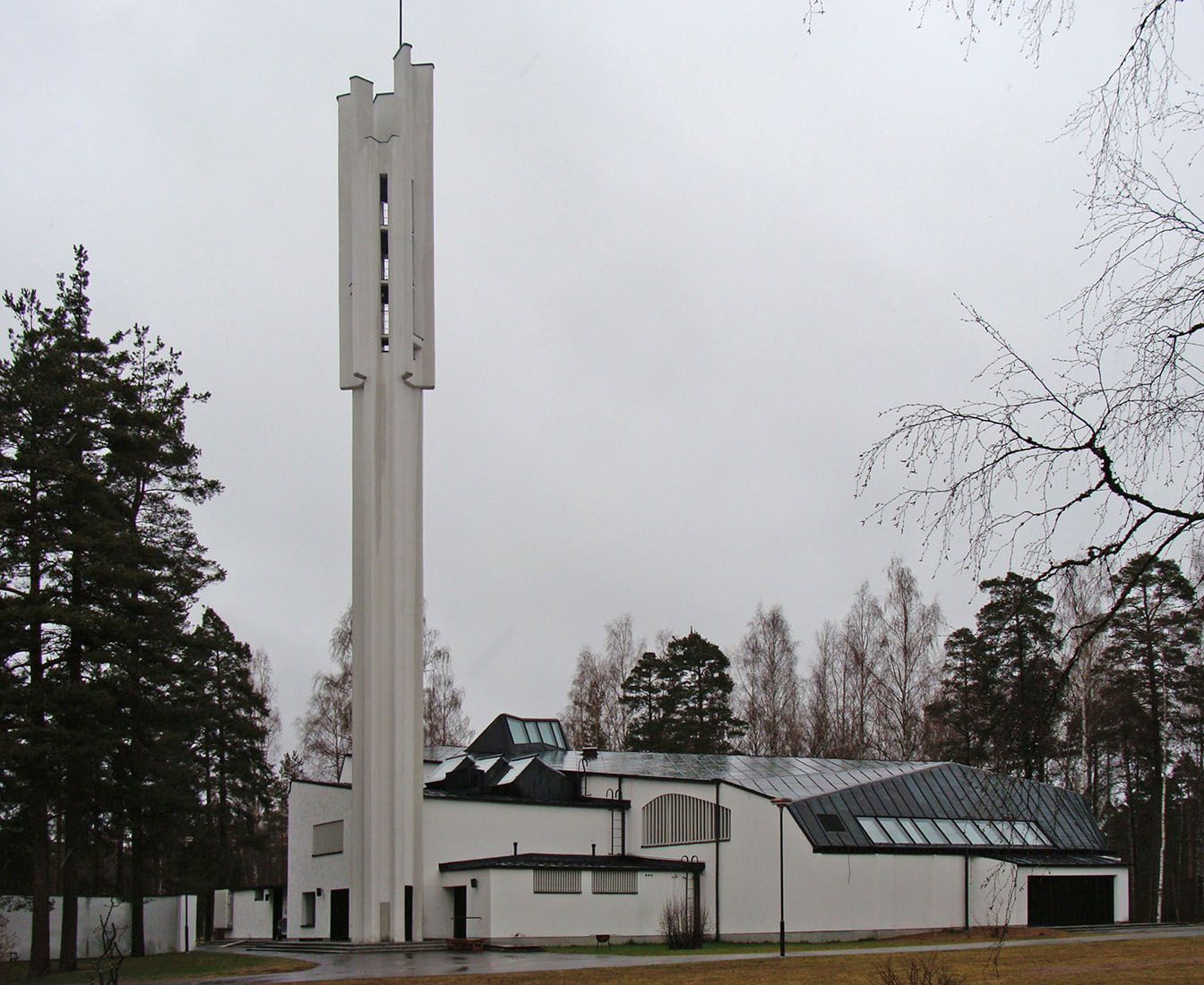 |
 |
 |
 |


Vuoksenniska Church
Ruokolahdentie 27, Imatra
1955 - 1958
In 1953 Alvar Aalto completed his work for the Imatra master plan, two years later he started to wor on the drawings for the Vuoksenniska Church in Imatra. This Church, which was completed in 1958, is considered to be an important work, and becam very well known. The official name of the church is the Church of the Three Crosses. The Vuoksenniska Church is considerd to be Alvar Aalto's most original church design. His design is based an a synthesis of various practical and aesthetic needs, fusing a broad range of motis into a coherent work of architectural perfection. The architect himself explained some of the key problems for his draft with the following words: 'Church activities in an industrial community naturally focus on social work. The world has many combinations of different kinds - one can only regret that the satisfaction of social needs has tended to deprive churches of their proper character as public buildings. Very often they are a kind of conglomeration of settlement house, youth and parish club, and parish meeting hall, with space for modest truly religious functions thrown in for good measure. The architect aimed at the full form of a church, while seeking to provide adequately for social activities without compromises. The basic design of the church consists of a series of three consecutive halls. We may call these halls A, B, and C; A being the sanctuary proper, while the other spaces can be added if necessary by means of moveable walls. On weekdays halls B and C can be used for parish activities. Each section has just under 300 seats, A and B together approximately 600, and all halls combined 800. The halls are separated by walls some 42 cm thick, sliding on a system of ball bearings in oil, and heavy enough to provide complete sound insulation. Part of the moving wall is flat, part of it is made up of cylindrical surfaces.' And more in detail, Alvar Aalto spoke about the Vuoksenniska Church: 'Divine service in a Lutheran church calls for three architectural focuses: the altar, the pulpit, and an organ loft for music and choir. All three are accommodated within a triangular form in the main church, A. As the most sacred section of the church, the altar is centrally placed, and the pulpit is generally relegated to one side. Considering that the audibility of the sermon is the most important and most difficult problem in a Lutheran church, this should logically result in an asymmetrical church interior. The long wall that diagonally faces the pulpit determines the reflection of sound to a much higher degree than the other walls. Correct design of this wall gives rise to optimum projection of sound to the congregation. In this case the acoustic wall consists of surfaces in various curved and arched forms. The whole wall, including the window surfaces, leans inward. The rounded parts of the moveable walls link up with the curve of the main wall.' Another important feature of the building is explaned by the architect as follows: 'The bell tower is dominated by the number three: its top section is tripartite, and widens upward. With this form the architect wished to create an architectural image that contrasts as strongly as possible with the factory chimneys which dominate the surroundings. The triad recurs inside in the vault which covers the three halls. The motif converges at the altar in three unpretentious crosses... The white interior has as its only accent of colour a symbolic stained-glass work depicting a crown of thorns in the principal windows on the west wall.'
Additionally to the cited seqences, Alvar Aalto also gives some insight into the construction and layout of the building. The fašade is made of brick and concrete and rendered white. A roof made of copper sheet hangs down low on the east side. The vaulted interior was elaborated empirically, with the intention to realize favorable acoustics. This work was carried out with the help of a miniature model, in which rays of light were directed vertically and horizontally from the site of the pulpit onto small mirrors in the ceiling and walls, the premise being that sound waves are reflected in the same way as light. The walls on the east side, between which the curved sliding walls can be hidden, have a completely different design. To ensure undisturbed separate use of the three sections, the Vuoksenniska Church has a total of five entrances. Hall A can also be used as a funeral chapel with a ceremonial exit straight to the graveyard in a beautiful pine forest setting.